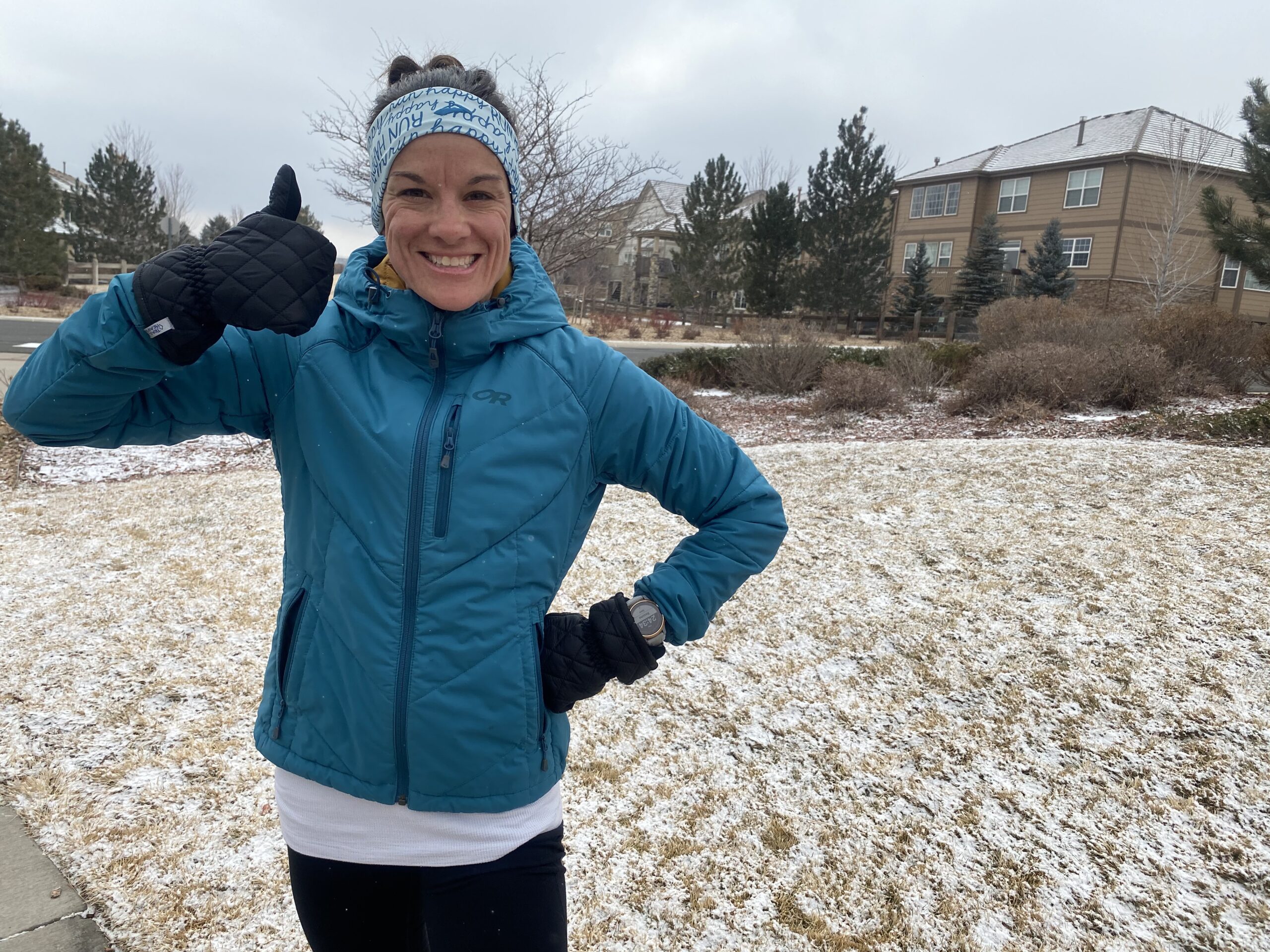If you’re like me, when you peruse the running shoe aisle and pick up a pair that catches your eye, you immediately take in the weight of it. If it feels at all heavy, I for one, immediately put it back down. Why, after all, would I want to make my running any harder by wearing a heavy pair of running shoes?! There does seem to be a range of weight in running shoes, but how wide is it? After noticing that not all running shoes are created equal when it comes to how much they weigh, I wondered how much they generally weigh and which weight is best.
One running shoe typically weighs between 6 and 11 ounces, depending on the type and size of running shoe. In total, when you run you’ll be carrying between 12 to 22 ounces on your feet.
Taking into account the average shoe size for men (10.5) and average size for women (8.5) here are weights for some of the industry’s most popular running shoes. Then you’ll be able to choose the best weight running shoe for your needs.
Top Running Shoes with Weights (Heaviest to Lightest)
| Shoe | Men’s Weight | Women’s Weight |
| Brooks Adrenaline GTS 21 | 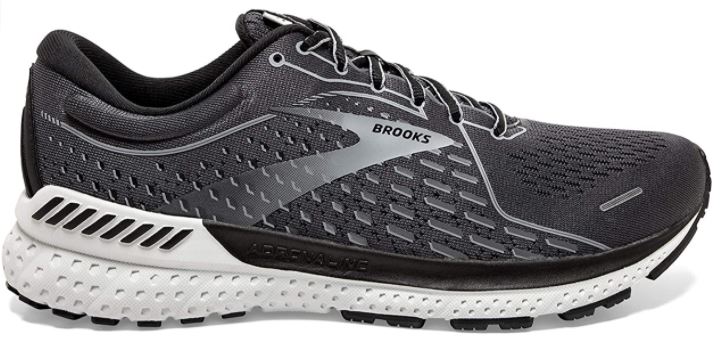 10.4 oz. | 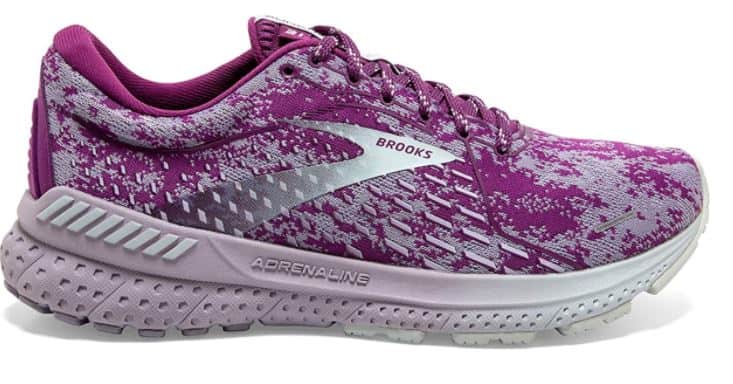 9.4 oz. |
| Mizuno Wave Inspire 17 | 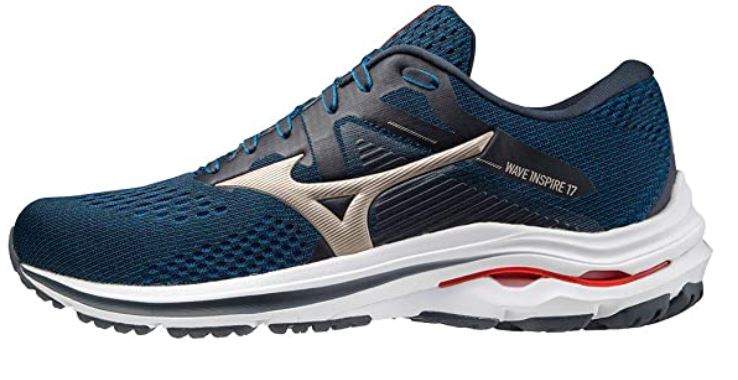 10.9 oz. | 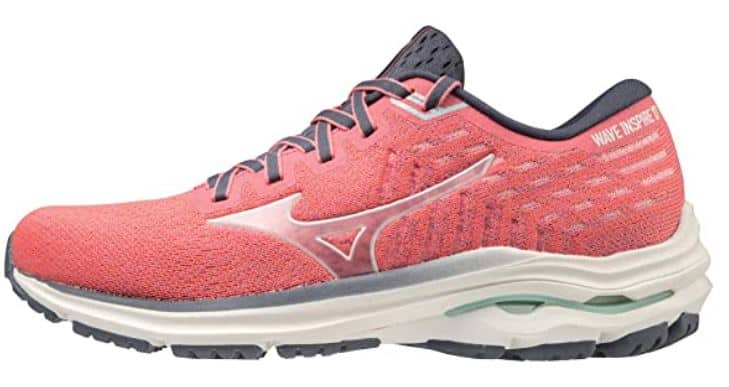 9.2 oz. |
| Asics Gel Nimbus 23 | 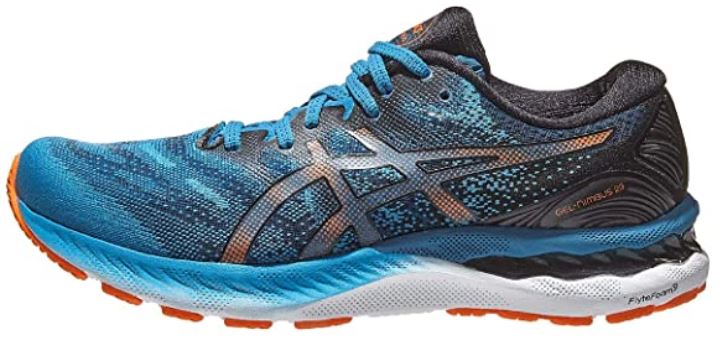 10.9 oz. | 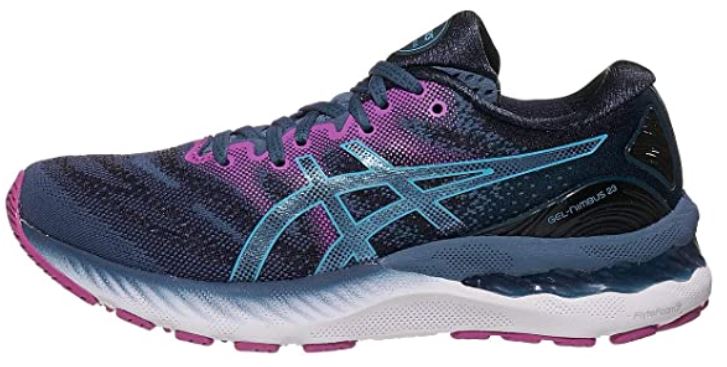 9.2 oz. |
| Hoka One One Bondi 7 | 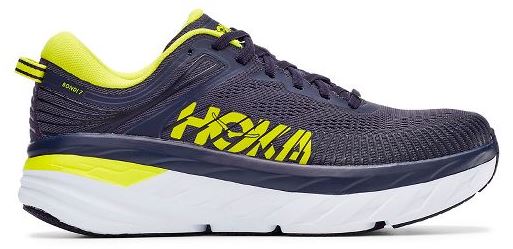 10.7 oz. | 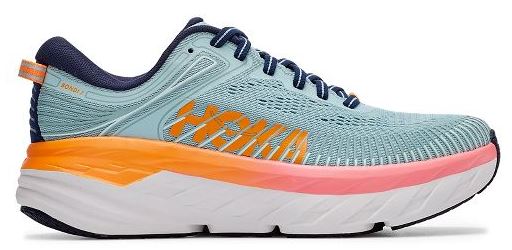 8.9 oz. |
| Nike Zoom Pegasus 37 | 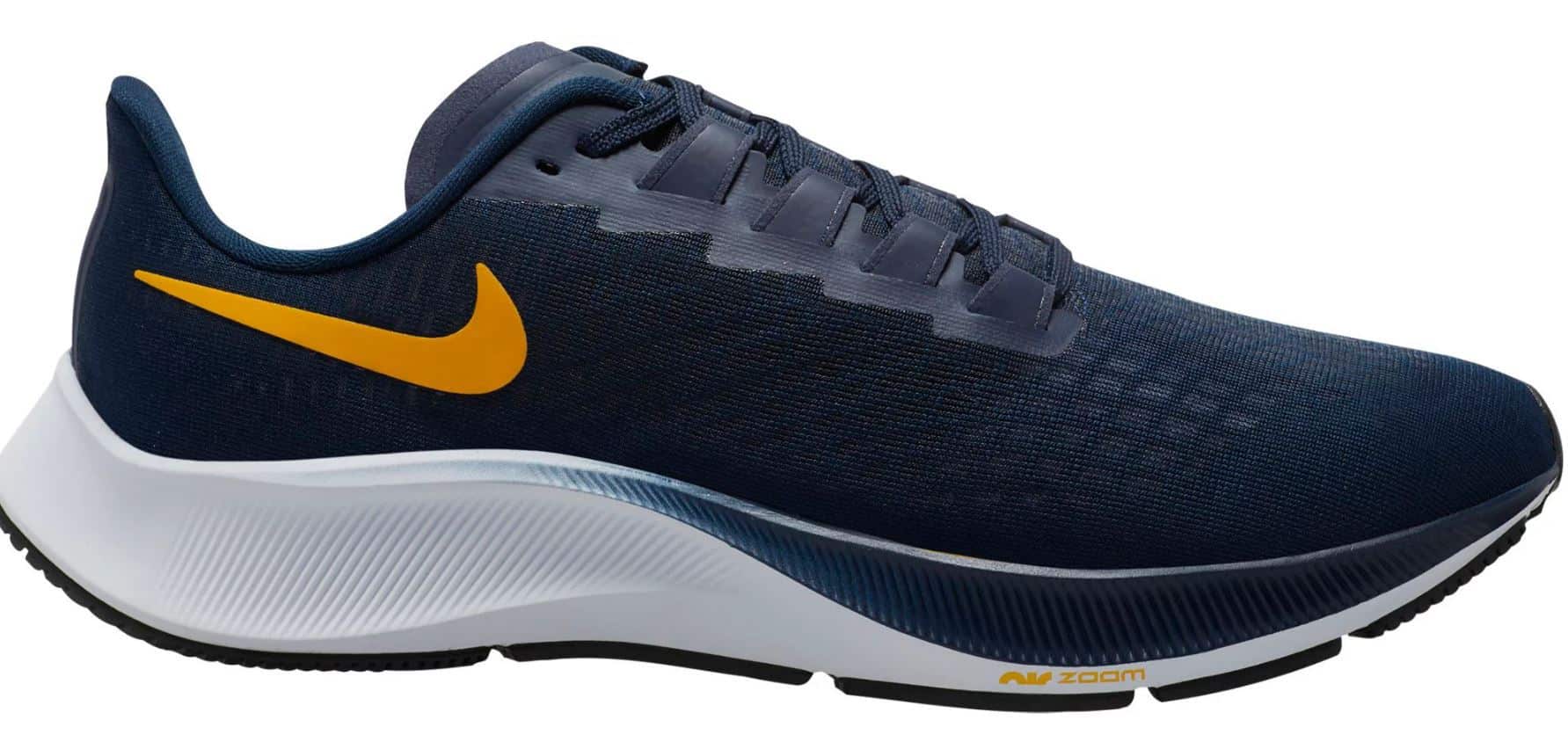 10.05 oz. | 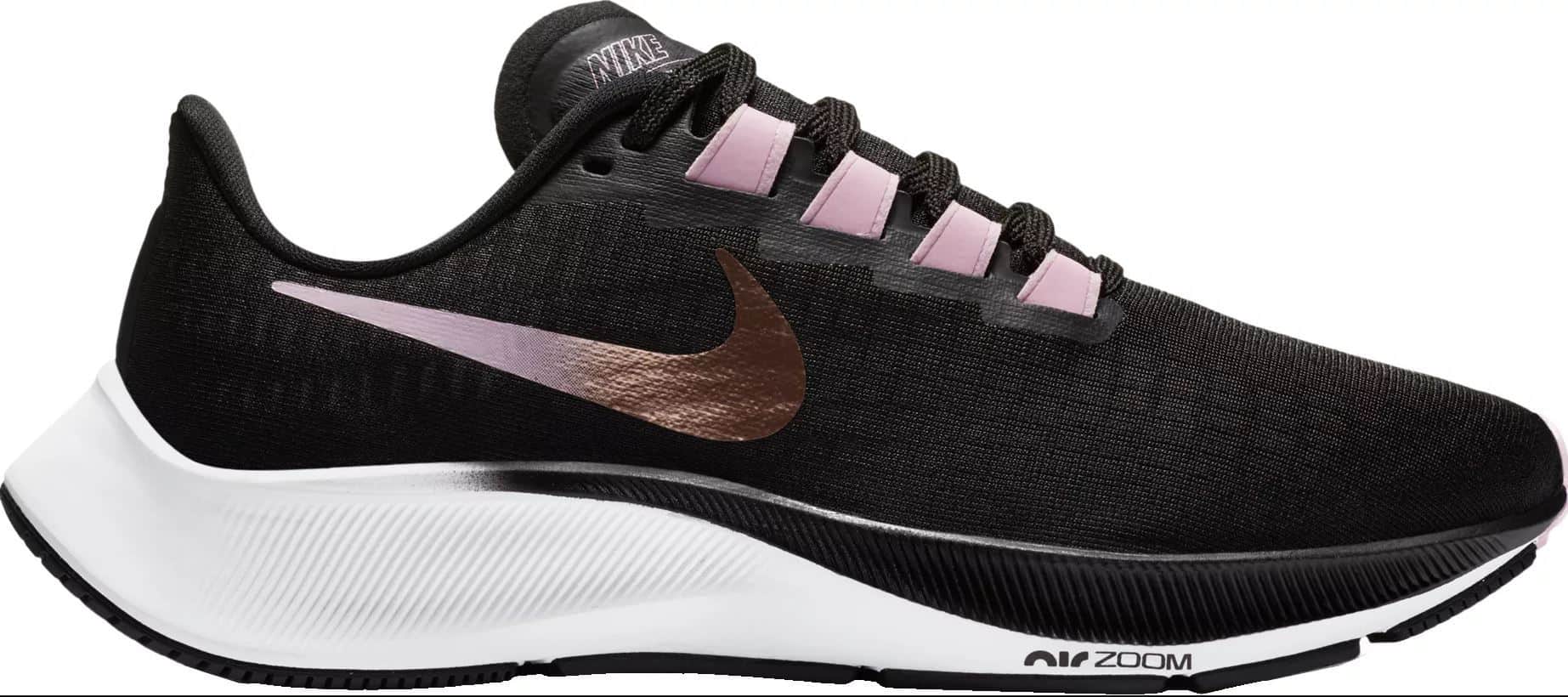 8.28 oz. |
| Altra Escalante 2.5 | 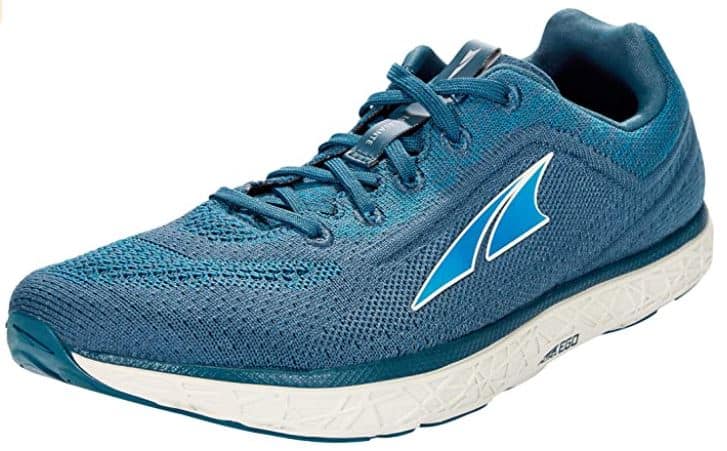 8.5 oz. | 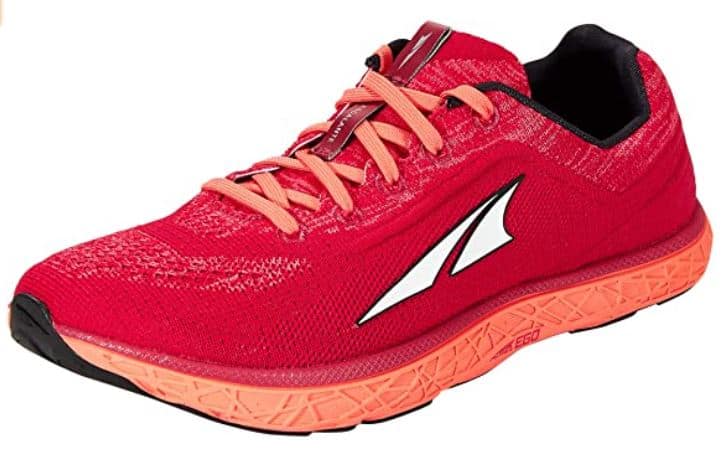 6.9 oz. |
| Saucony Endorphin Pro (Carbon Fiber Plate Shoe) | 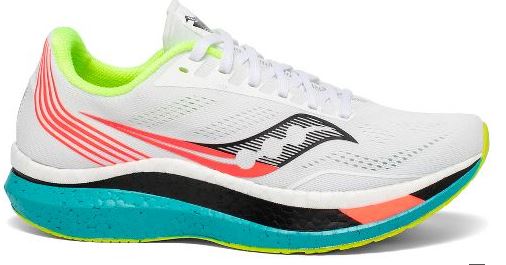 7.5 oz | 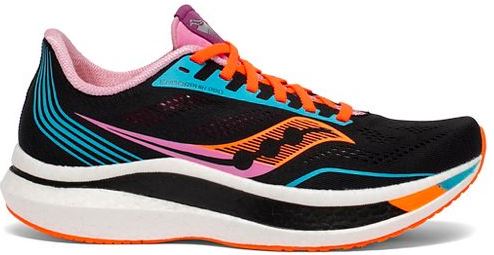 6.3 oz. |
Why the Varying Weight (hint: cusioning)
There are varying opinions when it comes to how much cushioning a running shoe should have.
If you’ve ever read Born to Run by Christopher McDougall (and if you haven’t, you should) you’ll find one extreme. He provides evidence that the human species benefits from either running barefoot or with basically no cushioning. This you’ll find in a shoe like the Vibram Five Fingers. On the opposite end of the spectrum are shoes such as the Hoka Gaviota. These are often described as “pillows for your feet.”
You’ll see from the table that running shoes really only vary in weight by 1-2 ounces per shoe. But that can make a difference when you’re trying to PR your 5k or running a marathon where you might be taking upwards of 50,000 steps. Although cushioning sounds like something you want between your feet and the ground, it’s what adds more weight to a running shoe. Though shoe companies have gotten pretty clever about figuring out ways to add cushioning and bounce to a shoe without adding extra weight.
An example of this is EVA cushioning which is used in a variety of your favorite running trainers. The midsole of the shoe is filled with tiny bubbles holding air that offer good cushioning and shock absorption without weighing down the shoe very much.
But in the end, a minimalistic shoe is going to weigh less due to the sheer fact that it’s made of less material.
Heavy Vs. Light: Running Shoe Weight
Most running shoes nowadays can hardly be called “heavy.” We’re lucky to live in a time where technology is so great that none of us have to be running in boats even when we desire the maximum amount of cushioning. However, we’ll put the weight of running shoes in the three categories. None is better than the other when utilized for the proper purpose.
Light, average, and heavy running shoes can all serve a purpose:
| Category | Weight Range | Best for: |
|---|---|---|
| Light | Men: Below 9 ounces (men) Women: Below 7.5 ounces | -racing -a near natural feel -offering improved running form |
| Average | Men: Between 9-10 ounces Women: Between 7.5 – 9 ounces | -those seeking versatility -if you only want one shoe for all your needs -balance between support and speed |
| Heavy | Men: Above 10 ounces (men) Women: Above 9 ounces | -regular high mileage running -those needing maximum cushioning to protect joints -heavier weight runners -trail running |
A more heavily cushioned shoe like the Brooks Adrenaline or something more streamlined such as the Altra Escalante have a seemingly small, yet significant weight difference. As a runner, you need to determine your needs in order to choose the best option for your training. Lighter isn’t always necessarily better. Many runners will actually own both a set of lighter shoes and another pair of heavier shoes depending on the type of running they’re doing. Heavier is often great to train in as it provides more cushioning for all of those miles, springing for the lighter shoe on speedwork days and for races makes the most sense to keep it as light as possible.
The Advantages of Heavier Weight Running Shoes
Injury Protection
It is argued that running shoes that weigh more can offer more protection from injury. So someone logging a lot of miles might find more comfort from a shoe that offers more cushioning.
According to Podiatry Today, the midsole of the shoe is where the cushioning is generally placed. A firmer midsole will make a shoe heavier, but can also help prevent the following ailments:
- plantar fasciitis
- Achilles tendonitis
- posterior tibial tendonitis
It needs to be noted, however, that not everyone shares this belief. In fact, some think that runners are too reliant on the pillowy softness which can impede proper running form. This article from Healthline states that shoes with maximum cushioning, “might actually increase leg stiffness and lead to greater impact loading when your foot hits the pavement.” But even they agree that the evidence is inconclusive.
Larger Build Runners
Runners who have a larger overall body frame might find a heavier shoe to their advantage. Besides cushioning, extra weight on a running shoe can also come from the width. Larger body types often have larger feet and need a shoe that’s comfortable while also giving proper overall support.
The Mizuno Wave Sky is a popular shoe for larger runners. It offers great stability while effectively distributing weight across the footbed.
Durability
Another extra advantage to more firmly cushioned running shoes is that they last longer. The need to replace them less often is certainly appealing. Less replacing equals less dollar signs! And though carbon fiber plated shoes are alluring because they are light and incredibly responsive (think fast!), they also wear out much more quickly. Which is why most runners save shoes like the Nike Alphafly for race days.
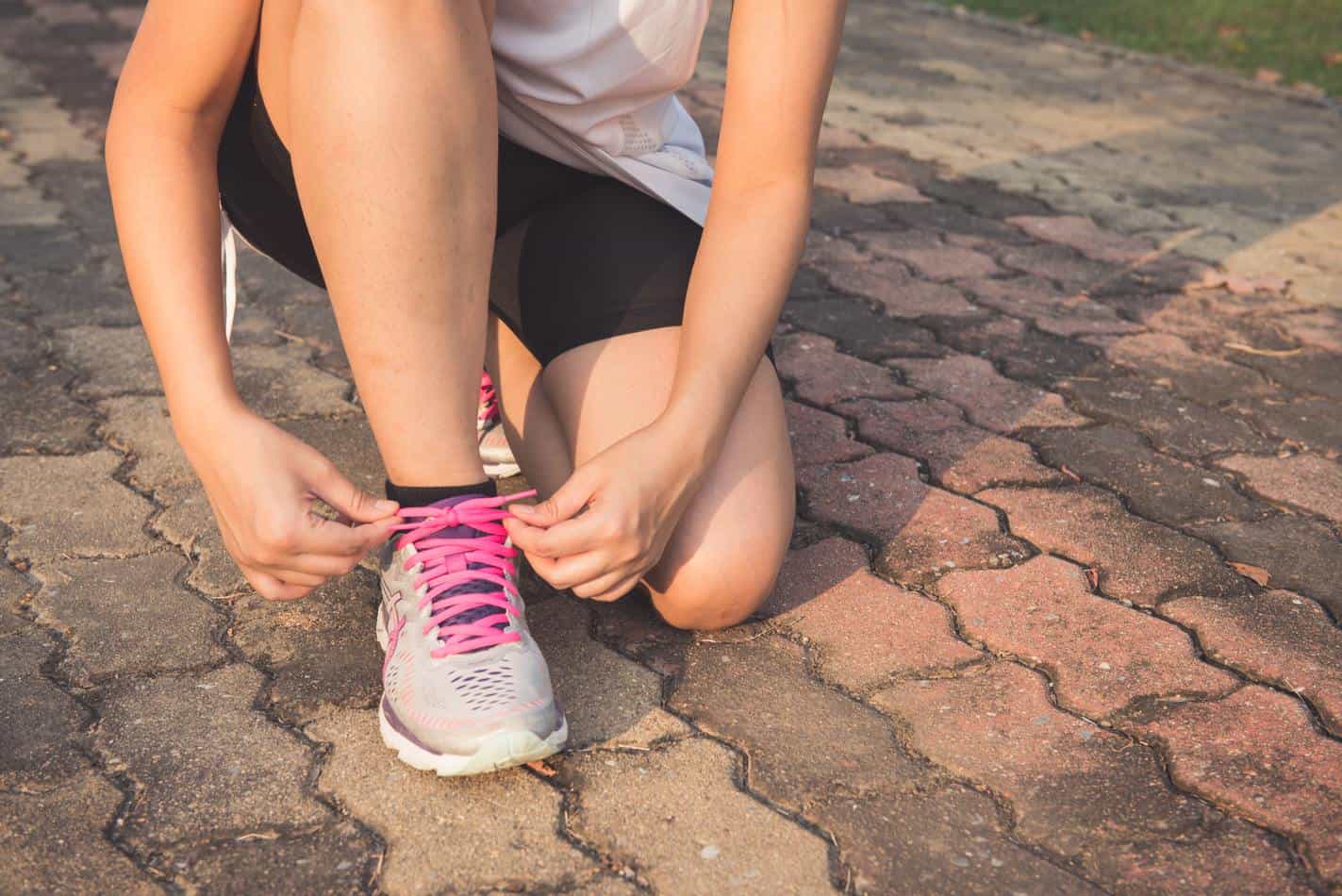
You’ll also find that trail shoes are generally heavier because of the need for more cushioning on difficult terrain as well as lugs on the sole that give you the stability you require. You can read more about that in, “Best Shoes for Running on Ice and Snow.”
The Advantage of Lighter Weight Running Shoes
Many runners, myself included, automatically assume light equals better when it comes to a running shoe. Though not necessarily always beating out a heavier shoe, it does have quite a few advantages.
Less Fatigue
Step after step, a runner is going to notice even an ounce of difference between two different running shoes. Weight does matter. Though cushioning can offer great support to someone running high mileage, a runner may also feel more fatigued by wearing a weightier shoe. Though it might not be felt right away, lifting heavier shoes over the course of a long run can make a runner’s legs feel like dead weight.
Softer midsoles, which tend to be lighter can also improve shock absorption. This allows for fresher feeling legs.
Efficient Running Form
Minimalist running shoes certainly aren’t anything new, but their popularity ebbs and flows. Though there are runners who do prefer a shoe with basically zero support and no cushioning, it’s uncommon to see. But the basis for this preference, and for wearers of the more mainstream minimalistic running shoes such as the zero drop Altras (my favorite) is that runners will run more naturally and efficiently by wearing them. With less of a chance for a heel strike, as well as a reduced impact loading rate, runners can often run their best stride while wearing lighter, less-cushioned shoes.
RELATED: Will Zero Drop Running Shoes Make You a Better Runner?
Faster
When runners want to be fast, they often turn to a lighter running shoe. The perfect combination for a runner is one who has an efficient running form wearing lighter, less cushioned shoes. The more connected feeling to the ground that these shoes offer can give the perfect amount of bounce a runner needs to snag best times.
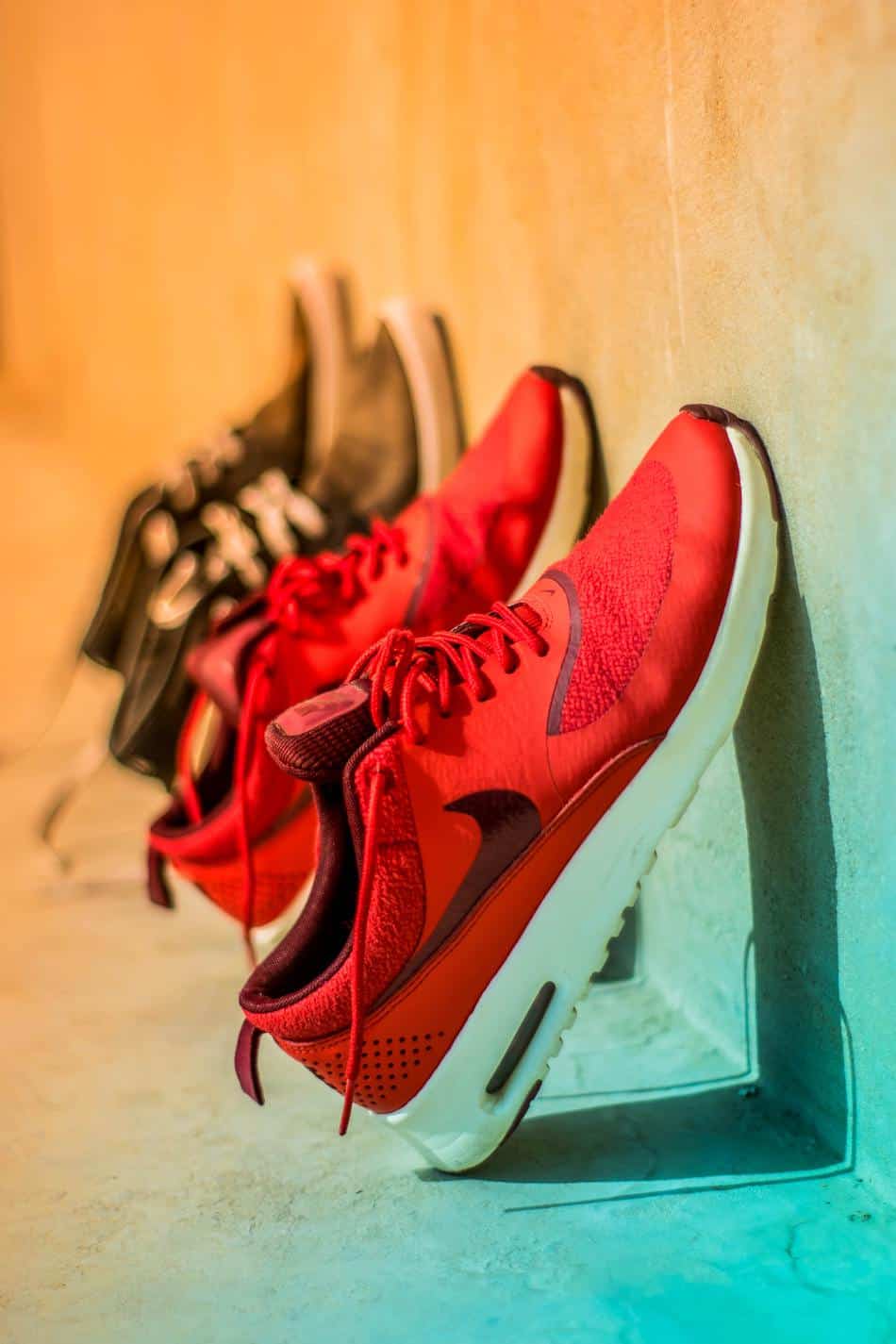
Balance Between Light and Heavy Running Shoes
You certainly don’t need to hear from me that running shoes are popular. A quick Google search will have your head spinning in no time. So I have a couple of recommendations for you:
- If you are someone running lots of miles (think training for a half or full marathon), consider having two pairs of shoes of varying weights. An average to heavy pair with good cushioning can be great for long runs. Not only will you get good support as well as that pillowy softness that so many runners say comes from a more maximalist shoe, but it can also better prepare you for races when it’s time to take the heavy shoes away. Save your less cushioned shoes for speedwork and for when it counts – race day. (Though I do recommend running at least one long run in them just to get used to them for that amount of mileage.)
- Try an average weight shoe. Since there hasn’t actually been conclusive evidence to suggest that a lighter shoe is better than a heavier shoe when it comes to staying free of injury, an average weight running shoe might just be what you need. And honestly, injuries usually occur in runners due to overtraining not from wearing the wrong shoe. I discuss this in my article The Dangers of Marathon Running and How to Avoid Them. If you’re less experienced at running, stick to middle ground.
- Get fitted at a running store. I know, I know – it’s so much easier to buy on the Internet these days. But if you have time to pound out running miles week after week, you owe it to yourself to get expert advice about the running shoe that’s best for you. They’ll ask about the type of training you’re doing and the time goals you have. They’ll also actually watch you run. It may take a little more time, but you’ll end up with a great choice of running shoe that best fits your needs.
- Take them for a test run. Just because you buy a pair of running shoes doesn’t mean you have to keep them. If you decide a light running shoe is best, for example, and find it’s just not cushioned enough, exchange them for something else. This is another advantage of buying from a local running store.
Running Shoe Weight is Just a Small Part of All That Running
Don’t get me wrong. Shoes do matter. And you may not have realized that 1-2 ounces in a running shoe could really make such a difference. But whether you’re training in a heavy shoe topping out at 11 ounces or you refuse to wear anything over 6 ounces, a lot more matters than just the weight of your running shoe.
READ NEXT: 7 of the Very Best Running Sock to Prevent Blisters
*As an Amazon Associate I earn from qualifying purchases. I earn a small commission from any purchases made from affiliate links and appreciate your support!

